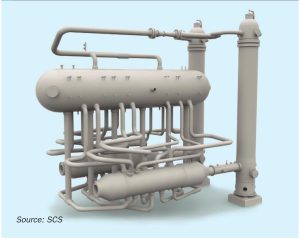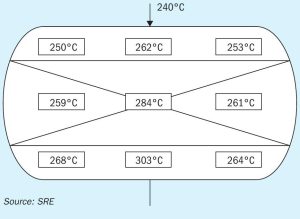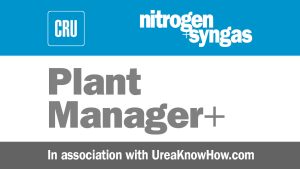
Impact of heat recovery arrangement on package reliability
Dr M. Olbricht and Dr J. Weidenfeller of Schmidtsche Schack | ARVOS (SCS) discuss the impact of the heat recovery equipment arrangement in an ammonia plant downstream of the secondary reformer on reliable boiler operation. A detailed investigation was performed by SCS in response to an operator experiencing difficulties in maintaining water quality in this critical equipment. Water quality has a crucial impact on the lifetime and reliability of the equipment.




